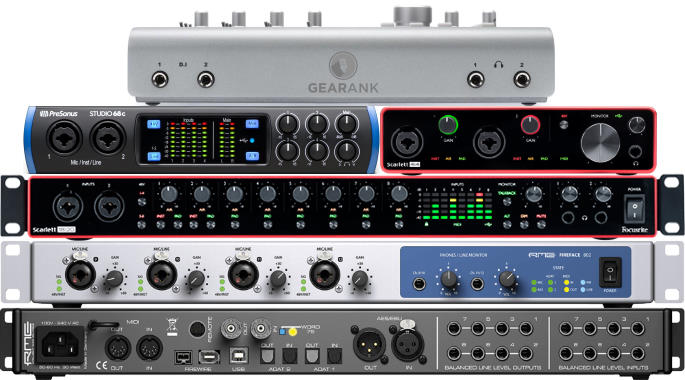Let’s talk about the unsung hero of modern music-making: the audio interface. It’s the kind of gear that rarely steals the spotlight but holds everything together behind the scenes—like a good stage manager or your favorite mixing engineer who somehow always knows exactly what you meant.
In 2025, the music production landscape has become so democratized that a high school bedroom studio can rival a boutique Nashville control room (well, close enough for YouTube). And right at the heart of it all? That humble little box that turns your analog brilliance into digital gold: the audio interface.
Now, for anyone selling musical merchandise in today’s climate—especially the indie retailers and online boutique shops—you’d be remiss not to pay close attention to what’s happening in this space. Interfaces are no longer a “techie” add-on or an upsell for the guitar-slinging customer who’s “thinking about recording someday.” They’re the new baseline. The new tuner pedal. The thing everyone needs and almost no one understands well enough when they’re buying their first one.
The Great Interface Awakening
We’re seeing a fascinating shift. No longer are customers just asking, “Can I plug my mic into this?” Now they want to know about converters, preamp headroom, onboard DSP, and driver stability. That’s partly due to the explosion of content creators who are as likely to record vocals as they are to stream, podcast, or build a TikTok beat in under 60 seconds.
It’s also due to manufacturers finally catching up with usability. Today’s top-tier interfaces—Focusrite, Universal Audio, and PreSonus, to name a few—are blending pro-level
audio specs with plug-and-play simplicity and some drop-dead gorgeous industrial design. (Let’s be honest, aesthetics matter now. Especially when your studio lives on camera.)
What Retailers Should Be Pushing
Here’s the thing: if you’re in the musical merchandise game, the audio interface is no longer a niche category—it’s a point of entry. When a customer buys an interface, they’re not just buying a product. They’re buying into a workflow. You’re not selling a box; you’re selling the potential for a whole new creative identity.
That means your staff needs to know their stuff. Which models have loopback? Which ones are class-compliant with iOS? How many mic pres are really necessary for a bedroom producer? Can you explain latency without triggering an eye-glaze?
Even more: your displays need love. Give interfaces real estate in your store. Set them up with headphones, mics, and instruments. Let people feel the signal chain. Host workshops. Partner with local engineers or producers for demos. Interfaces might not move as fast as strings or picks, but when you invest in customer education, they become loyalty-building tools.
The Future Is Modular, and Mobile
One trend to watch? Compact and modular interfaces. Devices like the Apogee BOOM, iD14 MkII from Audient, or IK Multimedia’s iRig series are turning interfaces into portable production hubs. That portability appeals to the hybrid creator—someone recording guitar tracks in the morning and live-streaming beat sets by night.
And the software bundling is smarter than ever. Nearly every interface comes loaded with starter DAWs, plug-in suites, or virtual instruments that deepen the ecosystem. You’re not just moving hardware anymore—you’re onboarding musicians into a whole platform.
Final Thoughts: Mind the Interface Gap
We’re in a gear moment that’s equal parts thrilling and bewildering. There’s more choice than ever, but more noise too. The right audio interface doesn’t just sound better—it feels intuitive, inspires confidence, and scales with the user’s skill.
That’s a rare combo. But it’s exactly the kind of product that smart retailers should champion. Because when you sell someone the right audio interface, you’re not just equipping their studio.
You’re amplifying their voice.


























